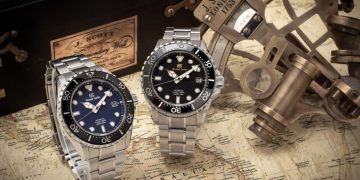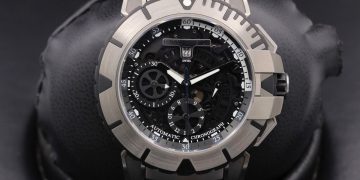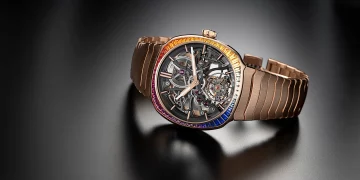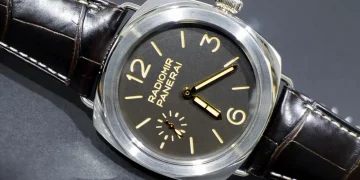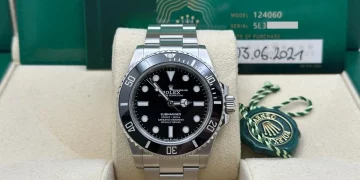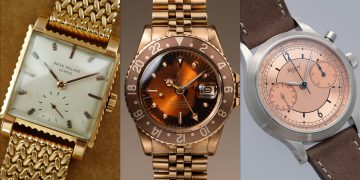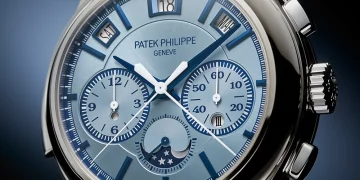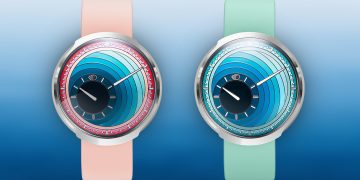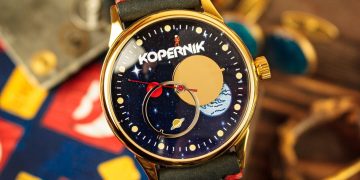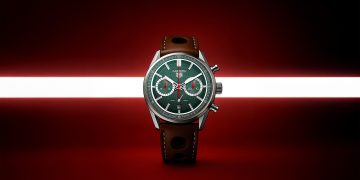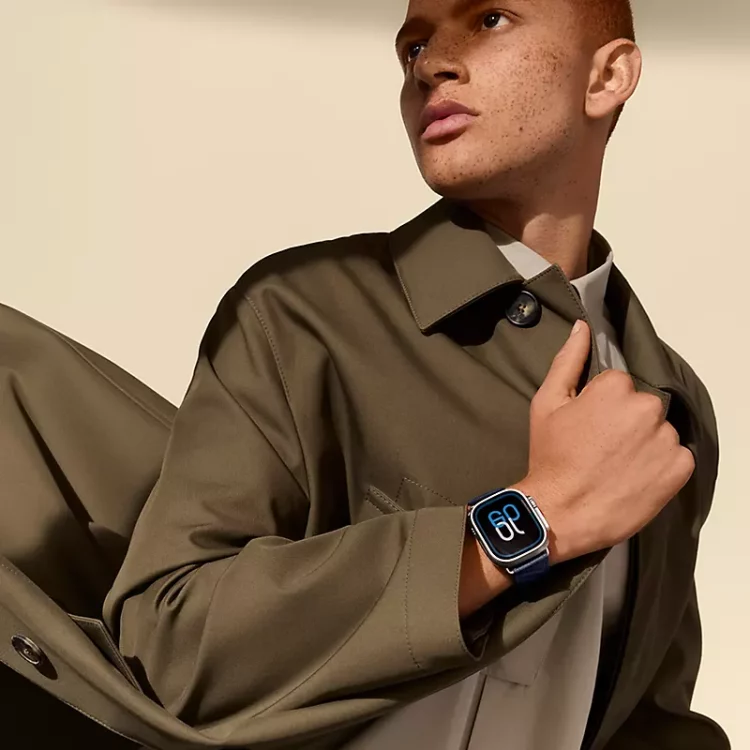Introduction: Setting the Stage for the Comparison
The Apple Watch and Garmin smartwatches are two of the most popular wearable devices in the world today. Both are praised for their advanced technology and user-centric features, but they serve different needs and demographics. While Apple has long dominated the world of smartwatches, Garmin has carved out a niche for itself by appealing to fitness enthusiasts, outdoor adventurers, and athletes.
This article delves deep into the user experiences, features, and reviews of both brands, comparing them from multiple angles:
- Design and Build Quality
- Features and Performance
- Fitness and Health Tracking Capabilities
- Battery Life
- User Experience and Interface
- Pricing and Value for Money
- Customer Reviews and Satisfaction
- Market Positioning
By the end of the article, you’ll have a clear understanding of how Apple Watch and Garmin users differ in their preferences, usage patterns, and experiences, and which brand might suit you best based on your lifestyle and needs.
1. Apple Watch vs. Garmin Watch: Understanding the Brands
a. Apple Watch Overview
Apple Watch has been the cornerstone of the company’s wearable tech line since its launch in 2015. Known for its premium design, intuitive user interface, and seamless integration with the iOS ecosystem, the Apple Watch has quickly become the most popular smartwatch worldwide. With each successive model, Apple has added new features to enhance the experience, including advanced health monitoring, fitness tracking, smart home controls, and mobile payments.
- Target Audience: Apple Watch is primarily targeted at iPhone users who want to enhance their smartphone experience with a wearable. It appeals to both tech enthusiasts and those looking for fitness tracking, but it’s also a fashionable accessory.
- User Base: The Apple Watch has a broad appeal, with a particularly strong presence in the general consumer market. It’s used by people from all walks of life, including young professionals, health-conscious individuals, and even those interested in fashion.
b. Garmin Overview
Garmin has built its reputation on being the leader in GPS technology and outdoor wearables. Unlike Apple, which started with a focus on smartphones and then expanded into wearables, Garmin has a long history in aviation, marine navigation, and fitness technology. Garmin smartwatches are especially popular among athletes, adventurers, and outdoor enthusiasts, thanks to their focus on durability, accurate GPS tracking, and specialized fitness features.
- Target Audience: Garmin watches are designed for active users who require high-performance tracking for activities like running, cycling, hiking, swimming, and trail running. Garmin’s Fenix and Forerunner series are particularly loved by serious athletes and outdoor explorers.
- User Base: Garmin attracts fitness-minded users, as well as outdoor adventurers looking for rugged, accurate, and durable GPS devices. Their market is more niche, targeting outdoor lovers, adventurers, marathon runners, and cyclists.
2. Design and Build Quality: Apple Watch vs. Garmin
a. Apple Watch Design Philosophy
The Apple Watch is known for its sleek, premium design and attention to detail. It looks like a traditional luxury watch with its rectangular face and customizable bands that come in various materials, such as stainless steel, aluminum, and ceramic. Apple focuses heavily on aesthetic appeal, making sure that the device complements the personal style of its user.
- Form Factor: The Apple Watch is designed to be lightweight and compact, with an easy-to-read screen that fits comfortably on the wrist.
- Customization: One of the key selling points of the Apple Watch is the ability to customize the watch face with various designs, complications, and colors, which appeals to users who value personalization.
- Materials: Apple offers a range of models, from the budget-friendly Apple Watch SE to the luxury Apple Watch Ultra made from titanium and featuring a larger display and additional rugged features for extreme conditions.
b. Garmin Design Philosophy
Garmin, while still focusing on good looks, emphasizes ruggedness and functionality in its designs. Garmin smartwatches, like the Fenix and Instinct series, are typically bulkier and designed with outdoor durability in mind. They are often made from fiberglass-reinforced polymer or stainless steel to withstand more extreme conditions. The designs tend to focus less on luxury aesthetics and more on usability for athletes and adventurers.
- Form Factor: Garmin watches tend to have a larger profile due to their rugged design, but they still manage to offer a comfortable fit.
- Customization: Garmin watches allow some customization of the watch face and display, but the options are typically more functionally driven compared to Apple’s approach, which leans more toward style.
- Durability: Garmin devices are built to be water-resistant (up to 100 meters), shockproof, and dustproof, making them ideal for extreme environments like mountains, deserts, and oceans.
3. Fitness and Health Tracking: Apple Watch vs. Garmin
a. Apple Watch: Comprehensive Health Features
Apple Watch has positioned itself as a health-conscious smartwatch. It integrates several health monitoring features, making it a popular choice for those who want to track their daily activity and overall wellness.
- Health Tracking: The Apple Watch includes heart rate monitoring, ECG, and blood oxygen level measurement. It also includes features like sleep tracking, fall detection, and the ability to detect irregular heart rhythms.
- Fitness Features: The Apple Watch provides activity rings to motivate users to close their daily goals related to movement, exercise, and standing time. It also offers workout modes for running, cycling, swimming, and more.
- Fitness Ecosystem: Apple Watch integrates seamlessly with Apple Fitness+, a subscription-based service that offers guided workouts, meditation sessions, and specialized programs.
b. Garmin: Specialized Fitness Tracking for Athletes
Garmin watches are designed with serious athletes and outdoor explorers in mind. While the Apple Watch offers excellent general fitness tracking, Garmin excels in offering advanced metrics for athletes and people training for specific sports.
- Health Tracking: Garmin watches provide heart rate monitoring, sleep tracking, and stress monitoring, but they also go deeper with VO2 max estimation, training load, recovery time, and performance condition. These features are essential for serious athletes who want to track not just their activity but their performance and recovery.
- Fitness Features: Garmin watches support specialized metrics for a wide range of sports, including swimming, cycling, trail running, mountaineering, golf, and rowing. They also offer advanced running dynamics, including cadence, stride length, and vertical oscillation.
- Navigation Features: Garmin is known for its GPS accuracy. Many of Garmin’s premium models include features like topographic maps, route planning, and multi-GNSS support (GPS, GLONASS, Galileo) to provide real-time navigation in remote environments.
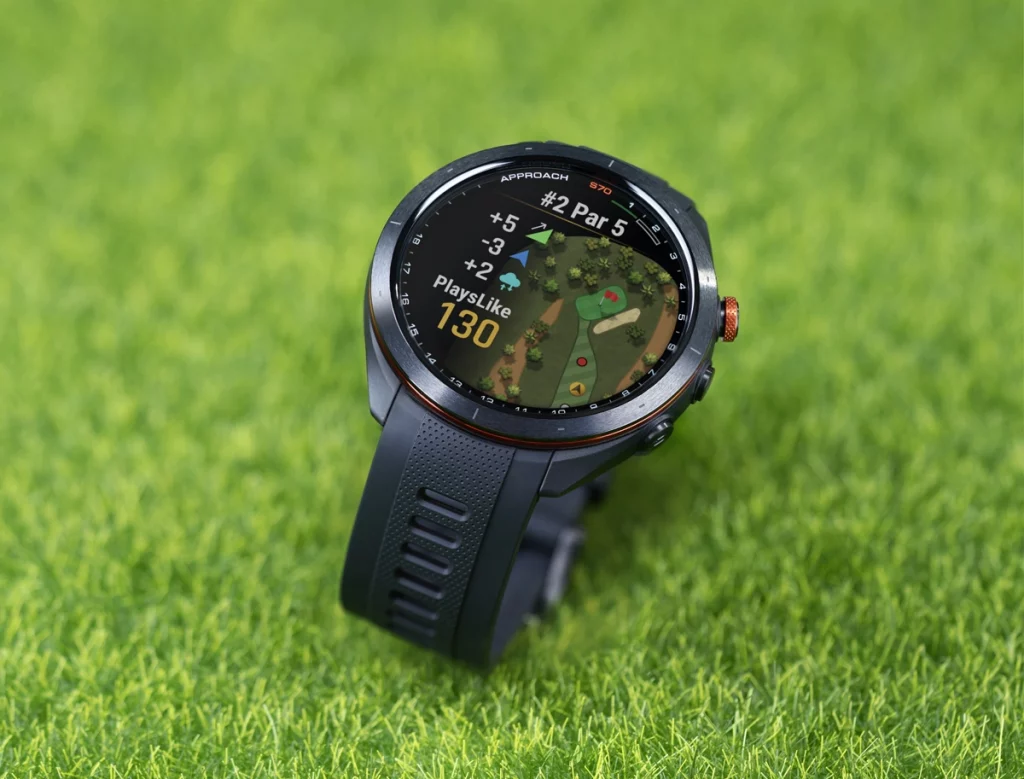
4. Battery Life: Apple Watch vs. Garmin
a. Apple Watch: Battery Life Expectations
One of the common criticisms of the Apple Watch is its battery life. While Apple has improved the battery life in recent models (particularly with the Apple Watch Ultra), it still generally lags behind Garmin in this regard.
- Typical Battery Life: Most Apple Watches need to be charged every 1 to 2 days, depending on usage, with light use extending the life a bit further.
- Battery-Saving Features: The Apple Watch Ultra has the best battery life of the Apple Watch lineup, offering up to 36 hours of usage in standard mode and up to 60 hours in low-power mode.
b. Garmin: Battery Life for Extended Use
Garmin is widely regarded as the leader when it comes to battery life. Many Garmin watches, especially those in the Fenix and Instinct series, offer impressive battery life that can last for several days, even with heavy use.
- Typical Battery Life: Garmin watches can last anywhere from 5 to 14 days on a single charge, depending on the model and usage. The Fenix 7X Solar, for example, can last up to 28 days with solar charging in smartwatch mode.
- Battery-Saving Features: Garmin includes several battery optimization modes, including UltraTrac mode (which conserves battery by reducing GPS tracking frequency) and solar charging on certain models.
5. Pricing and Value for Money
a. Apple Watch Pricing
Apple Watch is positioned as a premium product, with prices starting from around $199 for the Apple Watch SE and reaching over $800 for the Apple Watch Ultra.
- Target Market: Apple Watch is designed to appeal to iPhone users who are looking for an all-in-one smartwatch experience. It offers excellent value for money if you’re already embedded in the Apple ecosystem.
b. Garmin Pricing
Garmin’s smartwatches range from affordable models (starting around $200 for the Vivoactive and Instinct series) to premium options (like the Fenix 7X Solar, which can cost upwards of $900).
- Target Market: Garmin watches are targeted at those who require advanced fitness tracking, GPS accuracy, and durability, making them more suitable for athletes, outdoor adventurers, and professionals in extreme environments.
6. Customer Reviews: Apple Watch vs. Garmin
a. Apple Watch Reviews
Apple Watch is widely praised for its premium design, seamless integration with iPhones, and intuitive interface. Users appreciate its fitness tracking and health features, but it’s also seen as a status symbol for many.
- Pros: Premium design, user-friendly interface, excellent integration with Apple services, and comprehensive health tracking features.
- Cons: Limited battery life, lacks certain specialized sports features compared to Garmin, and is most beneficial for iPhone users.
b. Garmin Reviews
Garmin users appreciate the durability, GPS accuracy, and advanced fitness metrics provided by Garmin watches. Reviewers often highlight Garmin’s focus on performance over luxury, especially for those involved in outdoor activities and professional sports.
- Pros: Outstanding GPS accuracy, long battery life, advanced sports tracking features, rugged design, and extensive outdoor navigation tools.
- Cons: Bulkier design, steeper learning curve for some advanced features, and less seamless integration with non-Garmin devices.
Conclusion: Which One Should You Choose?
Both Apple Watch and Garmin offer outstanding wearable devices, but which one is right for you depends largely on your specific needs and lifestyle. If you’re someone who values a stylish smartwatch that integrates well with iOS devices and offers general fitness tracking and smart features, the Apple Watch might be the better option for you. However, if you are a serious athlete or outdoor adventurer looking for advanced fitness tracking, rugged durability, and impressive GPS functionality, then Garmin is the obvious choice.
Ultimately, the decision between Apple Watch and Garmin comes down to the balance of lifestyle versus specialized functionality.


